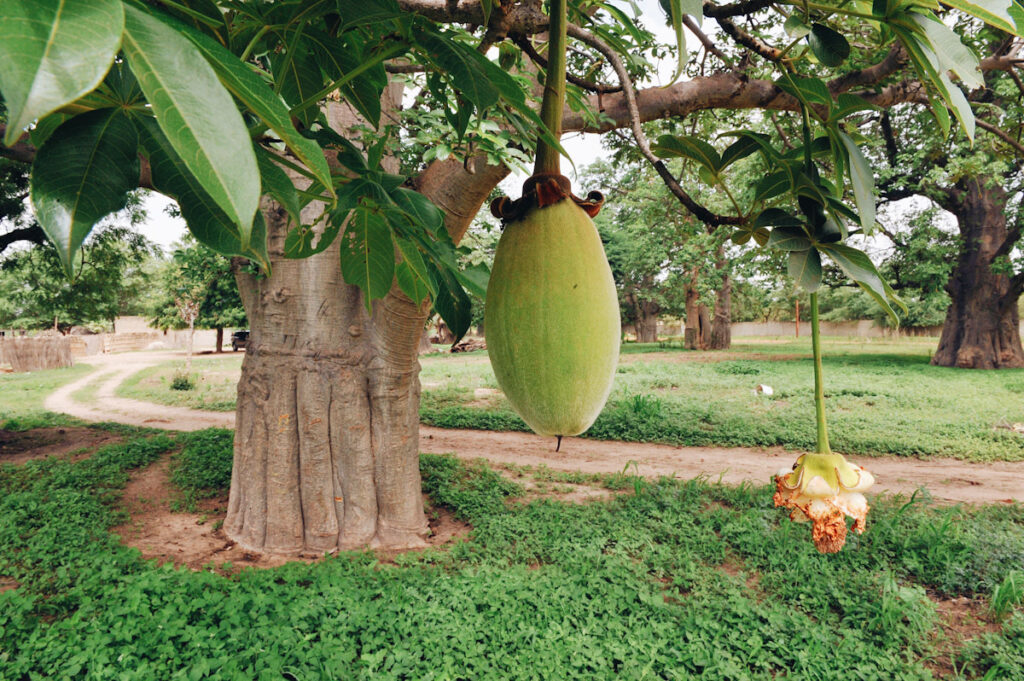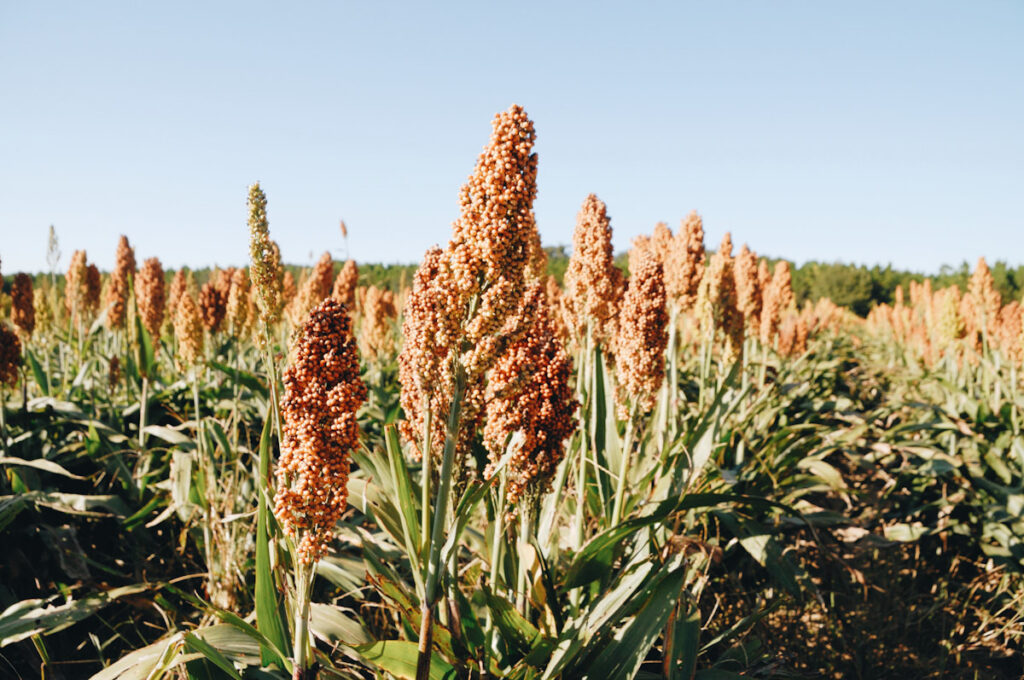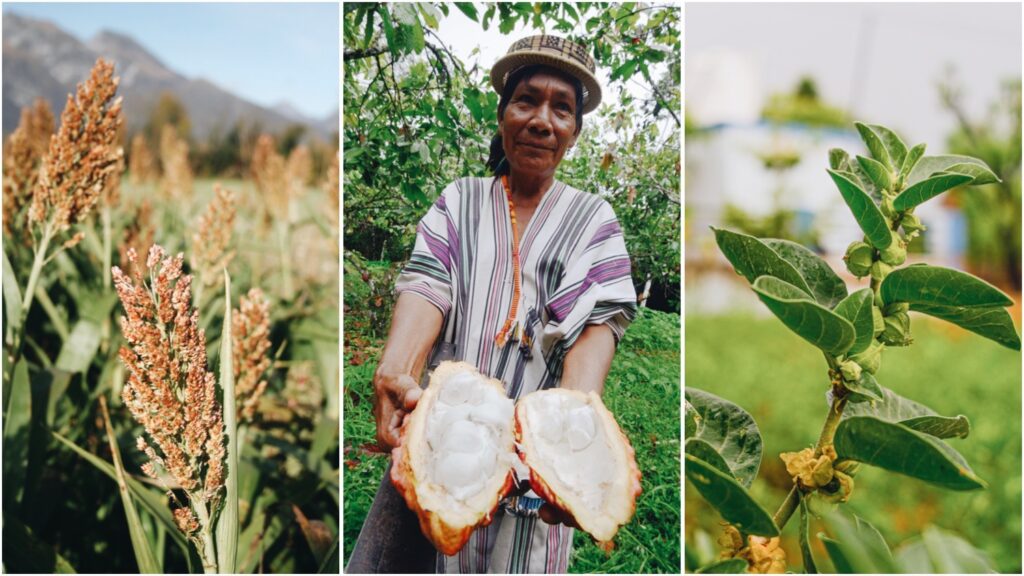Many of our foods have adapted the label of “superfoods,” but why settle for super when you can try foods that are heaven-sent? Theobroma cacao, the scientific name for the cocoa plant, literally translates to “food of the gods.” Both delicious and divine, cacao is not the only fruit with a fascinating indigenous history.
From breadfruit to ‘booch, 2021 has delivered a dazzling array of international superfoods to your grocery store aisles. But with dozens of choices, it can be hard to sort through the purpose and potential applications of each superfood—and to know which truly boosts your health to the max.
Superfoods also come with deep histories, which are often appropriated by mainstream food marketing. Rather than simplifying or misrepresenting the cultures these incredible foods spring from, talking to people at the source can help you foster a deeper understanding of a food’s culture.
With our guide to five trending superfoods, you’ll learn not only each fascinating history, but also multiple wellness applications for each food. And you’ll enrich not only your own health, but also your wealth of understanding when it comes to that food’s rich genesis.
Get to know 5 superfoods and their Indigenous history

Cacao
You may consume cacao every day, in chocolate bars and mocha lattes, without giving a second thought to its origins. Cacao, long known as a superfood, has a fascinating history and a conflicted present.
Cacao trees are native to tropical areas in the Upper Amazon region, including modern day Colombia, Ecuador and Peru. The trees bear fruit, which grows in brightly colored clusters that can range from deep red with an ombré effect to a papaya-hued orange. The seeds of the cacao fruit, cocoa beans, are used for everything from cocoa butter to chocolate.
One of the reasons cacao has been revered for literal millennia is that it contains a neurotransmitter called anandamide. Anandamide affects brain areas that influence pleasure and reward, physiologically imparting a sense of euphoria. Often called the “bliss molecule,” anandamide is quite a force to be reckoned with. It’s a natural anti-inflammatory that reduces fear and anxiety and increases your overall sense of wellbeing.
There are records of cacao being harvested and enjoyed as far back as 1900 BCE in Mesoamerica. The ancient Mayans thought cacao was a heavenly food, gifted to them by a feathered serpent god called Kukulkan. Cacao beans were currency and they were even given to soldiers as a reward for battle successes. While cacao is originally native to the Amazonian rainforest, in the 21st century the main producers of the crop are Côte D’Ivoire, Ghana, and Cameroon. In fact, West Africa produces nearly three-quarters of the world’s chocolate supply.
To keep up with the Western demand for chocolate, West African farmers have increasingly converted their forests into farm plots. Startlingly, top producing countries like Côte D’Ivoire have lost 80 percent of their forests in the last 50 years from deforestation. What’s more is that despite chocolate being a billion dollar industry, cocoa farmers generally earn less than $2 a day. The chocolate industry as a whole actually contributes to human trafficking and slavery. You may be surprised to know that most of the chocolate you consume is likely the byproduct of child labor.
In order to benefit indigenous communities, consider getting involved with an organization like Slave Free Chocolate by donating or signing a petition. Additionally, if you feel passionate about the illegal deforestation that’s happening in countries like Côte D’Ivoire, consider aligning yourself with a charity like the Rainforest Alliance, which is dedicated to repopulating West African forests.

Baobab
Also called the “upside down” or monkey bread tree, baobab trees grow in specific regions of Australia and Africa, but can also be found in the Middle East. They can grow incredibly tall, exceeding 30 yards. The trees yield large, textured green fruits that range from cylindrical to more round. The chalky white flesh of the baobab fruit has been described as “floury” and chalk-like and is said to taste very mildly of citrus. It’s often ground into a powder and sold as a superfood supplement to be used in smoothies and other recipes.
Speaking of citrus, gone are the days of oranges being the go-to remedy for colds. Baobab fruit has 10 times more vitamin C than oranges. And the list doesn’t stop there—it’s high in niacin, fiber, and also an excellent source of Vitamin B6. (Vitamin B6 is not naturally produced by your body, so external sources are highly treasured; this vitamin, in particular, can improve eyesight and depression, and has neuroprotective qualities.)
The uses of baobab, like most superfoods, supersede plain consumption. It has long been known in indigenous Ghanaian communities that baobab bark is an effective remedy for malaria. (Recent studies have pinpointed that this medicinal quality is due to an alkaloid called adansonin.) And in the agricultural sense, the charred fruit can be used as a bug repellant for cattle.
Maxwell Anane, the founder of Black Phoenix Ink, a literary nonprofit promoting positive racial storytelling for Black children, grew up in Ghana and says that the baobab is a recurring character in West African folklore. “We pass down our stories orally in Ghana and often you’d hear about the ‘Tree of Life.’ The baobab was considered to be magical and spiritually significant and so the trees are never cut down. It’s believed that the spirits of the ancestors reside in the trees. They’re a symbol of endurance and longevity because they’ve been here for so long.”

Açaí
The açaí bowl has become a staple at juice cafes and bodegas, and a superstar on Instagram for its rich, purple hue. It’s easy to forget that the tropical fruit hasn’t been a part of Western culture for long.
Açaí (ah-sigh-ee) is a tropical fruit that doesn’t look entirely dissimilar from a blueberry and it grows on an Amazonian endemic palm. Açaí berries are purple because of a plant compound called anthocyanin. They’re very nutrient-dense and contain everything from fiber to calcium and heart-healthy fats. Impressively enough, they are hailed as anti-cancerous and have been linked to lowered cholesterol. In studies, açaí juice has shown positive results in reducing oxidative stress, which can speed up muscle recovery.
Historically speaking, açaí was consumed almost exclusively by Amazonian ribeirinhos, or “river people.” The locals ate the nutritious fruit for many of their meals because of its accessibility, not its color or flavor. In recent years, we’ve entered what the New York Times called “açaí mania.”
It’s not uncommon to see a smoothie place in an affluent white neighborhood selling açaí bowls for upwards of $10. And just because more and more corporations are integrating açaí berries into mainstream culture doesn’t mean the ingredient is being shown respect. For example, the advertising for the Slovakian beverage brand Açaico uses stereotypical tropical imagery to create a limited narrative of Brazil. The ring-tailed lemurs and iguanas used on their packaging aren’t native animals. When companies exoticize an ingredient to sell it, but fail to educate themselves on the particulars of that food’s actual history, it perpetuates stereotypes and cultural harm.
While the native country that açaí berries hail from has not been completely sanitized and erased, it has been caricatured and portrayed with a level of dismissiveness. The general focus on its nutritional benefits has served to decontextualize it from Brazilian culture as well. And this surge in demand for açaí in the Western world is a real threat to biodiversity in the Amazonian forest. Not unlike the situation that West African farmers face with a rising demand for chocolate leading to deforestation, indigenous Amazonians are seeing their land stripped away of native plants and flora to make room for more acai plantations. To quote the British Ecological Society, “This thinning is projected to lead to a reduction of 50 percent in native tree species diversity and 63 percent of pioneer species and a consequent homogenization of the plant community.”
A way that you can respectfully and responsibly consume açaí is to buy from companies that support forest conservation and to align yourself with charities that are committed to Amazonian forest repopulation. Additionally, as a consumer, educate yourself on the positive identity hallmarks that are tied to Brazilian culture and take notice of whether or not the brand you purchase açaí from actually respects and celebrates the culture, or stereotypes it.

Ashwagandha
Ashwagandha is a small evergreen shrub with many aliases, also known as winter cherry, poison gooseberry, and Indian ginseng. Unsurprisingly, it is often grown and harvested in India. Ashwagandha bears a lot of similarities to toyon, or the Christmas berry plant. Both plants are small evergreen shrubs and produce small, red, glossy berries.
Ashwagandha is an immune amphoteric, meaning that it has positive balancing properties on your immune system, so it’s become a popular health supplement sold everywhere from Amazon to Walmart. It is also used to fight against insomnia, fatigue, and mood disorders such as anxiety and depression. Ashwagandha roots in particular are seen as a potent herbal remedy for anything from stress to an overactive thyroid. The roots can be used fresh or dried and the resulting powder can be added to warm beverages.
In India, where Ashwagandha is grown, it is used for increasing the body’s resilience to stress and as an anti-arthritic agent. A potent ayurvedic herb, ashwagandha is part of an ancient medicinal system that dates back to 10,000 years ago. Ayurvedic herbs are synergetic and meant to be used in conjunction with one another to create a harmonious healing effect. They can be taken both internally and externally and are adaptogenic, meaning that they can adapt to your body’s needs and act preventatively.
Traditionally speaking, ashwagandha root powder was often given to children as night tonics and administered to the elderly for longevity. The impact of the Western world using ashwagandha has included attempted or successful biopiracy, which is the theft of plants or natural material through restrictive patenting. For example, Natreon Inc., an American company, attempted to patent ashwagandha for the “management of stress.” India then submitted documents confirming that medicinal recipes utilizing ashwagandha had been used in their country for centuries, citing 15 pieces of evidence and documents dating back to the 12th century. As a result, the EPO (European Patent Office) withdrew the patent request.
As a consumer, this is a firm lesson in how not to behave when encountering another culture’s medicines or herbs. In order to benefit indigenous communities, you must credit their native flora versus attempting to decontextualize it and claim it for profit. In order to protect Ayurvedic concepts, educate yourself about their origins and hold the companies that you buy from accountable for crediting India and their indigenous communities for their “wonder herbs.”

Red Sorghum Leaves
Sorghum is a “super grain” that is drought and heat resistant and is thought to be native to East Africa. The crop grows tall and has a feather-like quality and can be bicolored, red, or tan. It’s classified as a cereal and is commonly used in African cuisine.
Sorghum has a whopping 22 grams of protein per cup. The leaves in particular have anti-inflammatory properties and are rich in antioxidants, which makes them a good combattant against oxidative stress and free radical damage. Additionally, particular tannins and phenolic compounds in sorghum are hailed as anti-cancerous and have been linked to the inhibition of an enzyme linked to breast cancer.
Sorghum leaves grow all over Africa and have made their way into various countries across the continent from Burkina Faso to Uganda to Ghana. Sorghum is considered an indigenous leaf in Ghana and the crop functions as both a source of income and employment for local farmers. A popular Ghanaian dish called waakye, a combination of rice, beans (generally blackeyed peas), and red sorghum leaves, has been the center of many nutritional studies. Red sorghum leaves give the rice a distinctive pale red color and fortify the dish with nutrients, including phosphorus and iron.
Because of the rise in Celiac’s disease and other conditions that create gluten intolerances, more people are searching for gluten-free flours and alternative grains. Sorghum flour is now being more commonly sold in the United States. Because its ties to African cuisine are often erased, consumers miss the opportunity to incorporate sorghum leaves in traditional ways, including as a coloring agent or even (thanks to its high iron content) a treatment for anemia. In certain parts of Northern Ghana, sorghum is even fermented and made into beer.
Participating Without Erasing
Many people subscribe to the idea of universal entitlement, which states that anybody can integrate parts of other cultures into their own lifestyle whether it be for entertainment or education. This viewpoint disregards the power imbalance that is often present between the people who would like to consume and the people whose culture is being cannibalized.
The number-one way to participate in a new trend intelligently and intentionally is to see where your product is sourced. Some things to consider:
- Does the company emphasize the mutually beneficial relationship it has with local farmers, artisans, craftspeople?
- Does it exploit indigenous people through unfair and unsafe labor practices?
- Can you find the product from an ethical wellness brand rather than a big box store?
- Do you understand the product’s backstory? You will inevitably learn something new and you will be championing the dignity of cultures with less prominent voices.
Engaging with a superfood with a sense of reverence and transparency, and as a student who’s open to learning more, brings positive reverberations in fellow food lovers.


